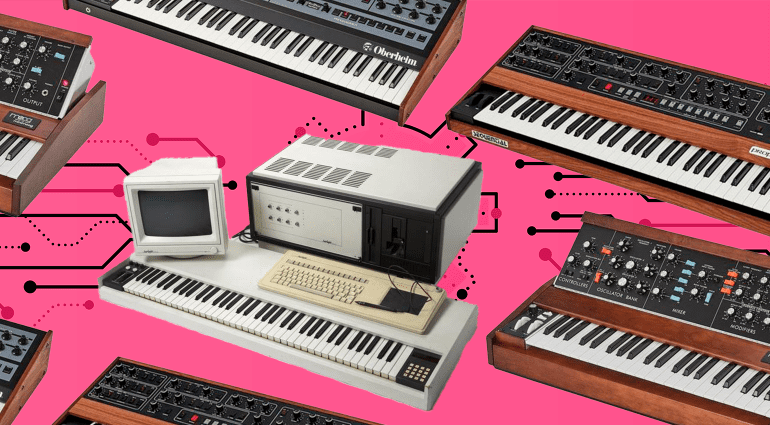
Between the 1970s and the 1980s, music underwent a radical transformation. The rise of new technologies such as microprocessors allowed synthesizers to become a mass-produced instrument. Iconic synthesizers such as the Oberheim OB-Xa, DX7, Jupiter-8 and many others laid the foundation for many 1980s hits. But which are the best synthesizers of the 1980s?
Today we want to celebrate some of these synths and see together the 9 best synthesizers of the 1980s! 🎹
1. MiniMoog (1970-1981)
You are currently viewing a placeholder content from YouTube. To access the actual content, click the button below. Please note that doing so will share data with third-party providers.
The MiniMoog is unmistakably one of the first synths of the 1980s, having begun its legacy in the 1970s.
Robert Moog conceived it to make synthesizers accessible to everyone. Before, they were very expensive and hard to find. In 1970, the Moog Synthesizer was beyond the reach of many. Only a few universities and musicians were so fortunate to play this synth.
It was out of this need that the MiniMoog was born. However, at first, it was estimated that only “100 copies” at most would be sold.
On the contrary, the Minimoog was produced continuously for 13 years and more than 12,000 copies were made. It was the first synthesizer sold in retail stores and an icon of the 70s continuing briefly in the 80s.
The list of artists who have exploited the potential of this synth is endless: Stevie Wonder, Herbie Hancock, Chick Corea, Sun Ra, Giorgio Moroder, and many others…
Production was discontinued right at the beginning of the 1980s, but in the last 10 years it has been reintroduced to the synth market with an updated version: Moog Minimoog Model D 2022.
The Minimoog remains a gem for those who love synthesizers, however, Behringer has launched a viable alternative for those on a budget, The Behringer Poly D.
2. Yamaha CS-80 (1977-1980)
You are currently viewing a placeholder content from YouTube. To access the actual content, click the button below. Please note that doing so will share data with third-party providers.
Competing with the Prophet-5 and Oberheim OB-X polysynthesizers, the CS-80 is often described as the most important polyphonic analog synthesizer to be introduced at the beginning of the 80s.
Greek composer Vangelis used the Yamaha CS-80 extensively. He described it as “the most important synthesizer of my career-and for me the best analog design ever.”
A synthesizer used by Brian Eno, Kate Bush, Michael Jackson and many others because of its versatility and ability to blend together up to 8 different voices.
However, the design of the Yamaha CS-80 caused quite a few backaches, since, this 1980s synthesizer weighed 81 kg!
Just to give you a comparison, today’s Nord Lead 2 weighs approximately 5kg-so you could carry up to ten Nord Lead 2s and still not have reached the weight of a Yamaha CS-80.
To date, Yamaha has not resumed production of these, however in 2015, they introduced the Reface CS, a 37-key mini synth based on the CS-80.
3. Sequential Circuits Prophet 5 (1977-1984)
You are currently viewing a placeholder content from YouTube. To access the actual content, click the button below. Please note that doing so will share data with third-party providers.
The majestic Prophet-5: the most enduring 80s synthesizer.
The Sequential Circuits Prophet-5 was a pioneer of the 1970s and 80s because of its innovative features introduced in 1977: the ability to save your own synth sounds and… polyphony!
Dave Smith, founder of Sequential Circuits, almost scrapped the idea of the Prophet-5. Initially, he conceived the idea of a programmable synthesizer by combining microprocessors with his synthesizer chips. However, when Moog and Arp failed to develop it in 1977, he abandoned his work to devote himself completely to this project. This brilliant insight made it the best synthesizers of both the 1970s and 1980s, allowing artists to experiment.
Micheal Jackson, Peter Gabriel, Pet Shop Boys, Eurythmics, Kraftwerk and many others made the Sequential Circuits Prophet 5 a true music machine. Churning out hit after hit. This celebrated 1980s synth was not only famous in the pop world, but became the centrepiece of the soundtracks for Terminator (1984).
The longevity and extreme adaptability of this synthesizer has also been felt among more recent artists. Like, for example, Pendulum or Radiohead. Thom Yorke in their iconic opening track of “Kid A” (2000), “Everything In Its Right Place,” created the song around the sounds of the Prophet-5.
Today, there are numerous virtual and analog emulations of Prophet-5, and Sequential Circuits has re-released variants such as Prophet-6 and Prophet-10 in 2020.
Otherwise, if you want to opt for something cheaper, Arturia has released an emulation. Present in the Arturia V Collection 9, this emulation is called the Prophet-5 V and the Prophet-VS.
4. Fairlight CMI (1979-1989 / 2011 – to date)
You are currently viewing a placeholder content from YouTube. To access the actual content, click the button below. Please note that doing so will share data with third-party providers.
A list of the best synths of the 80s couldn’t exclude the Fairlight CMI! The Fairlight CMI (short for Computer Musical Instrument) is a digital synthesizer, sampler, and digital audio workstation introduced in 1979 by Australian Fairlight.
It was one of the earliest music workstations with an embedded sampler and is the father of sampling.
In the UK, the saga of the Fairlight Series I began with none other than Peter Gabriel, who proudly claimed the first unit. Across the Atlantic, Bruce Jackson embarked on a mission, showcasing the Series I sampler far and wide. His efforts bore fruit when musical legends Herbie Hancock and Stevie Wonder, captivated by its potential, each acquired their own unit for a princely sum of US$27,500 in 1980. Thus, the Fairlight found its place in the hands of trailblazers, shaping the soundscapes of the 80s.
The Fairlight holds significant importance due to its factory library containing many iconic sounds heard in numerous hit songs from the 80s.
After the success of the Fairlight CMI, other firms introduced sampling. New England Digital modified their Synclavier digital synth to perform sampling, while E-mu Systems introduced a less costly sampling keyboard, the Emulator, in 1981.
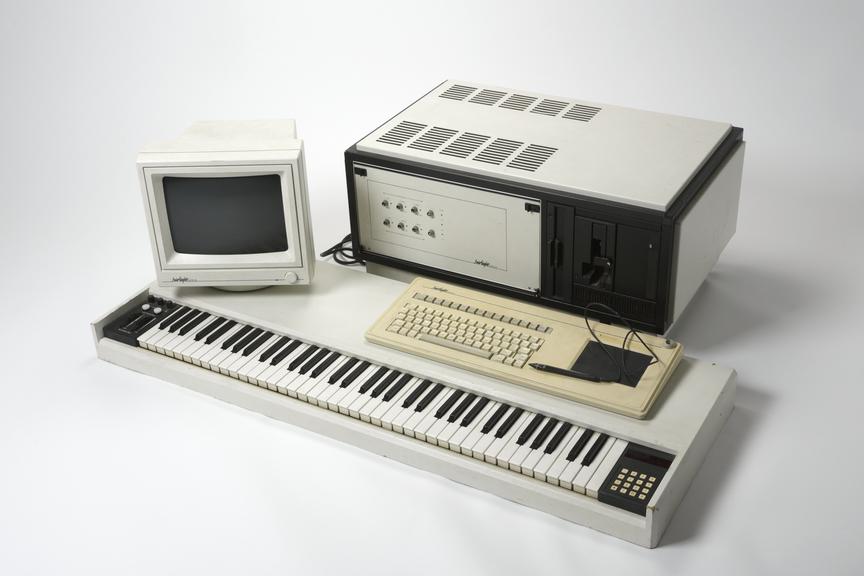
The Fairlight CMI
5. Oberheim OB-Xa (1980-1982)
You are currently viewing a placeholder content from YouTube. To access the actual content, click the button below. Please note that doing so will share data with third-party providers.
The Synth that made us “jump”
When you hear the word Oberheim, your mind goes straight to that — Van Halen’s “Jump.” The iconic intro riff played by Eddie Van Halen immediately brings us back to the vibrant bass and synthetic brass of the OB-Xa. This famous 1980s synthesizer could let you create multiple layers between the different sounds available achieving a unique sound to use in one’s songs.
Alternatives to the Oberheim OB-Xa:
Perhaps you’ve thought of buying yourself an OB-Xa, but unfortunately its production was discontinued in 1982. Finding a used one is quite a challenge, but luckily there are some alternatives. In May 2022, the Oberheim OB-X8 was launched. An 8-voice analog synthesizer that merges the voice architecture and filters of the Oberheim OB-X, OB-Xa, and OB-8 models.
However, if you are looking for a cheaper option, we have a very worthy alternative from Behringer. The Behringer UB-Xa with 16 multi-timbral voices and 61 semi-weighted velocity-sensitive keys with poly aftertouch is perfect if you are looking to get that beefy 8os synth sound!
6. Roland Jupiter-8 (1981-1985)
You are currently viewing a placeholder content from YouTube. To access the actual content, click the button below. Please note that doing so will share data with third-party providers.
Tears for Fears, Journey, Depeche Mode, and Ministry are just some of the artists who have used (or perhaps abused?!) the Roland Jupiter-8. The younger brother of the Roland Jupiter-4 (1978-1981), a marvelous invention of Toshio Yamabata.
The Jupiter-8 was a real revolution for synthesizers in the 1980s. First of all, the cumbersome preset buttons were removed. Also, the wooden finishes typical of 1970s synthesizers gave way to a more modern design. Notable design elements included a metal body, multicolored buttons, and knobs.
This famous 1980s synthesizer, produced in only 2,000 copies, became an icon of musical history.
Today it is a rare item, sold at astronomical prices, with valuations exceeding 20,000€!!
If we want to consider this synthesizer as a faithful friend, we can say that “a good friend is worth his weight in gold“… and in this case, what a piece of gold it is!
Best alternatives to the Roland Jupiter-8:
Perhaps you have often fantasized about owning a Roland Jupiter-8, without it costing you an arm and a leg 😉
Thankfully, Roland itself has decided in recent years to revive their old line of synths by introducing the Roland Cloud. A subscription-based collection of VST instruments and ‘RVR’ sample libraries launched in early 2018. The Roland Jupiter-8 is obviously part of these.
If you don’t like virtual instruments and are looking for something more solid, consider the 2019 Roland Jupiter-X. It offers similar functionality to its bigger brother.
7. Yamaha DX7 (1983-1987)
You are currently viewing a placeholder content from YouTube. To access the actual content, click the button below. Please note that doing so will share data with third-party providers.
The Yamaha DX7, with its distinctive FM-based sound, achieved considerable success between 1983 and 1989, thus leaving its mark on music history.
Before the DX7, the Minimoog redefined the role of keyboards and synthesizers. This allowed them to emerge from rhythm sections and compete with virtuoso guitarists.
However, the DX7 mastered the technology, introduced FM synthesis to the masses, and sold about 150,000 units, making it one of the best synthesizers of the 1980s and one of the best-selling!
But why was it one of the best synthesizers of the 1980s? Famous producers and keyboardists, working with artists like Bruce Springsteen and Janet Jackson, found versatility in the DX7, replacing them with bulky (and incredibly heavy) instruments like Fender Rhodes/CS-80. This was transformative and changed the way music had been made until its introduction.
A few fun facts about the DX7 I:
- The DX7 I was extremely noisy, prompting some to quickly sell it off. Nowadays many digital synths, such as the Native Instruments FM8 offers a similar sound without the noise!
- Its keyboard only supported MIDI velocity ranging from 1 to 100, making it less than ideal as a master keyboard in studios.
- The e-pianos produced by the DX7 I gained significant fame in the 80s, with many mistaking them for the authentic Fender Rhodes sound.
In the mid-1980s, Yamaha flooded the market with a multitude of low-cost FM synthesizers and discontinued the DX7 in 1989. In 2015, Yamaha released a smaller and lighter FM synthesizer, the Reface DX.
8. Roland Juno-106 (1984-1988)
You are currently viewing a placeholder content from YouTube. To access the actual content, click the button below. Please note that doing so will share data with third-party providers.
An everlasting classic
In 1984 Roland introduced the Juno-106, kicking off a legendary series of synthesizers that have continued to shape the sound of the 80s. It introduced digitally controlled oscillators (DCOs), which was completely innovative, powered by the NEC μPD8253 chip from the EP-09 electric piano.
Back in the 80s, the Juno-106 wasn’t in high demand because it seemed less robust compared to a Moog or its 6-voice sibling, the Jupiter-6. However, in the early 90s, techno enthusiasts embraced this affordable synth, utilizing it on now-iconic tracks, eventually elevating its fame.
Some of the artists who used the Juno-106:
- Depeche Mode
- Moby
- William Ørbit
- The Prodigy
- Fatboy Slim
Although the Juno-106 was discontinued in 1988, the distinctive sound of the Juno-106 synthesizer is now available on the SYSTEM-8. All of the original tones, features and sounds described above are now accessible via the JUNO-106 PLUG-OUT.
9. KORG M1 (1988-1995)
You are currently viewing a placeholder content from YouTube. To access the actual content, click the button below. Please note that doing so will share data with third-party providers.
Last but not least the KORG M1!
The Korg M1, introduced in 1988, marked a milestone as the pioneering workstation in the music industry. Despite its reliance on short PCM samples in its ROM and non-resonant digital filters, its versatile programming capabilities allowed users to shape and refine sounds to their liking.
The M1 gained widespread acclaim in the late 80s for its exceptionally realistic tones, notably in instruments like the piano, organ, and even simple percussive elements like finger snaps.
Although it faced competition from the Roland D-50, which appealed to some users who preferred its features over the M1, the latter ultimately outsold its rival, reaching approximately 250,000 units sold.
This made the KORG M1 a standout figure in the world of music production during its lifespan.
Feedback:9 best synthesizers of the 1980s
The 1980s gave us iconic synthesizers, but what makes them still attractive today? What do you think is the best synthesizer of the 1980’s? 👇
4 comments
Leave a Reply
You are currently viewing a placeholder content from Facebook. To access the actual content, click the button below. Please note that doing so will share data with third-party providers.
More InformationYou are currently viewing a placeholder content from Instagram. To access the actual content, click the button below. Please note that doing so will share data with third-party providers.
More InformationYou are currently viewing a placeholder content from X. To access the actual content, click the button below. Please note that doing so will share data with third-party providers.
More Information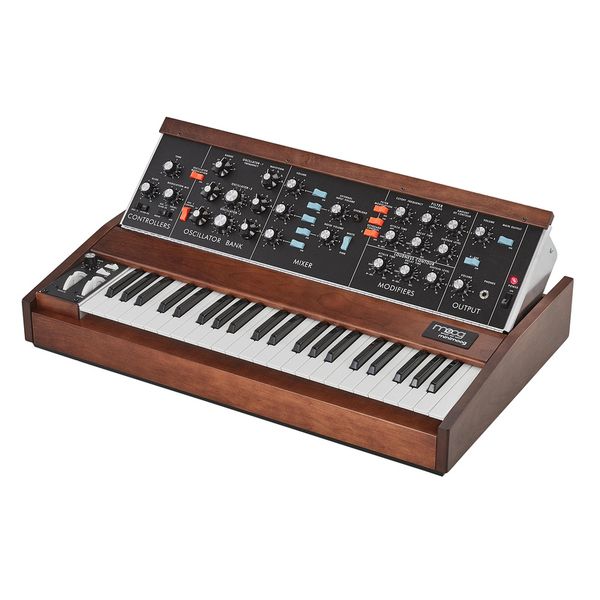
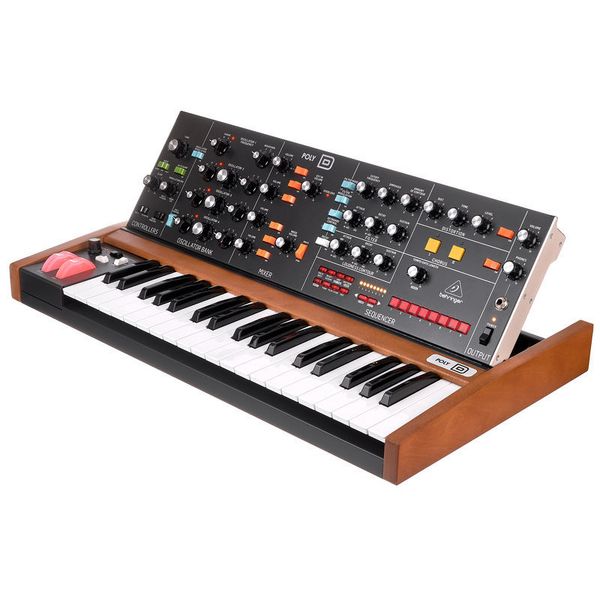
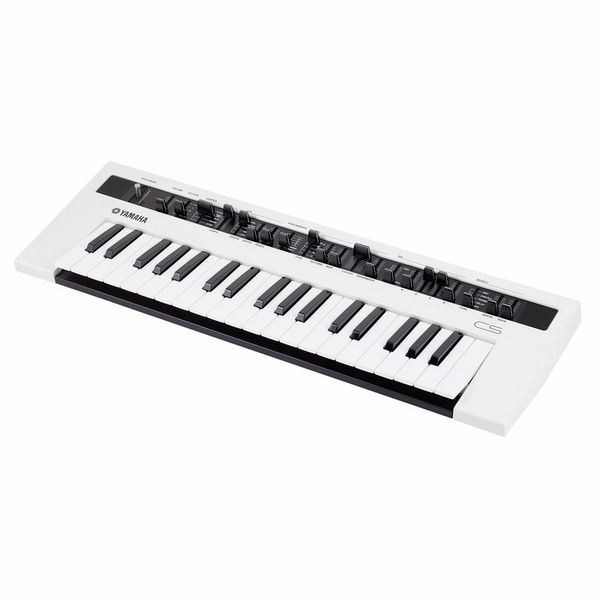
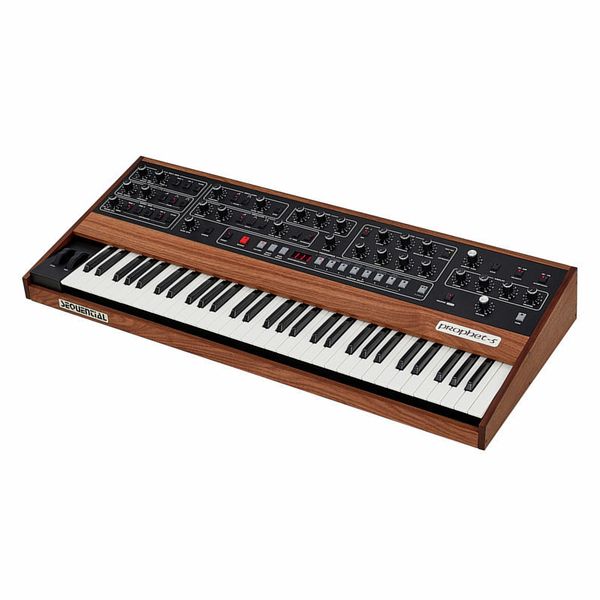
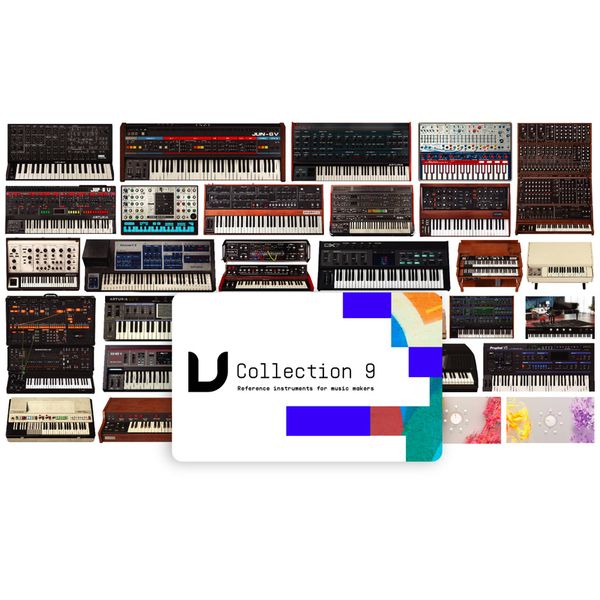
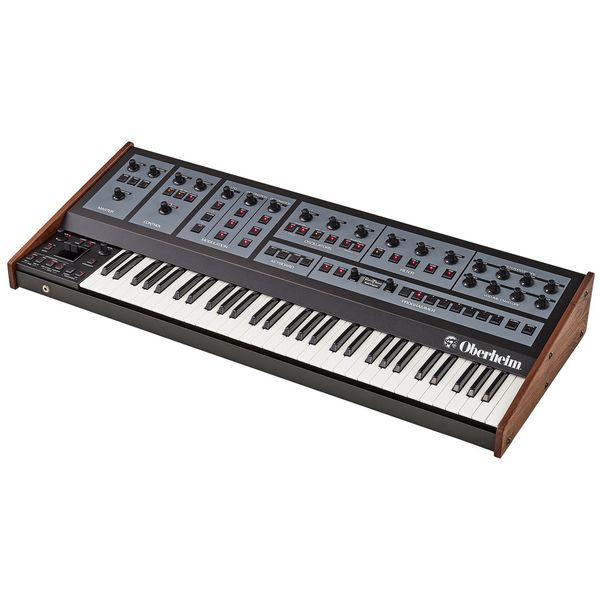

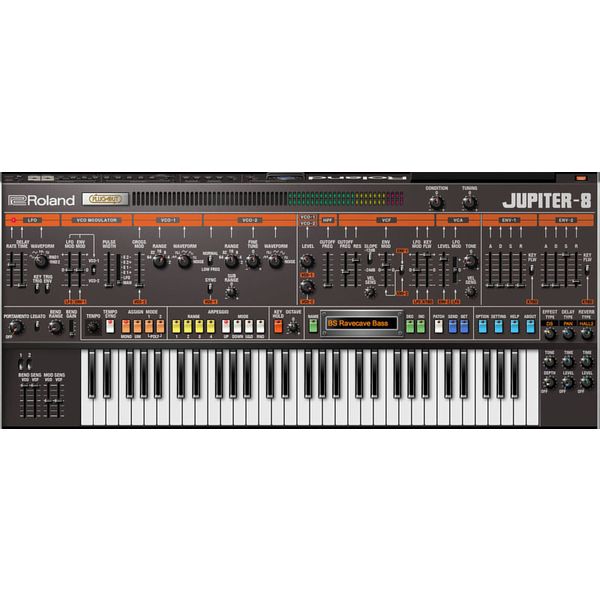
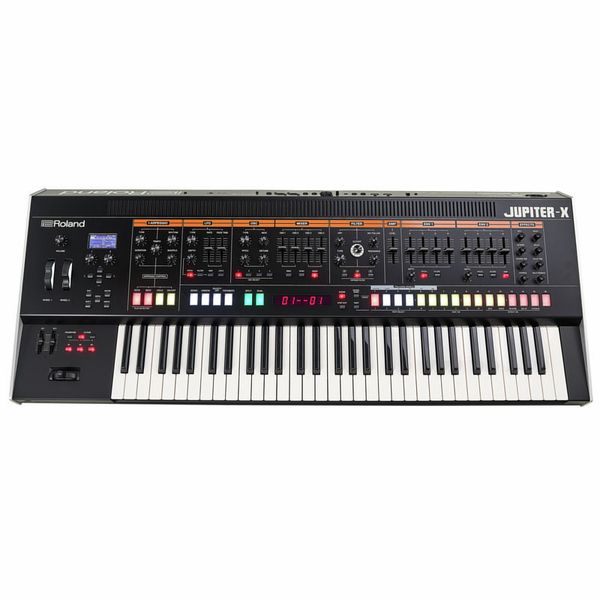
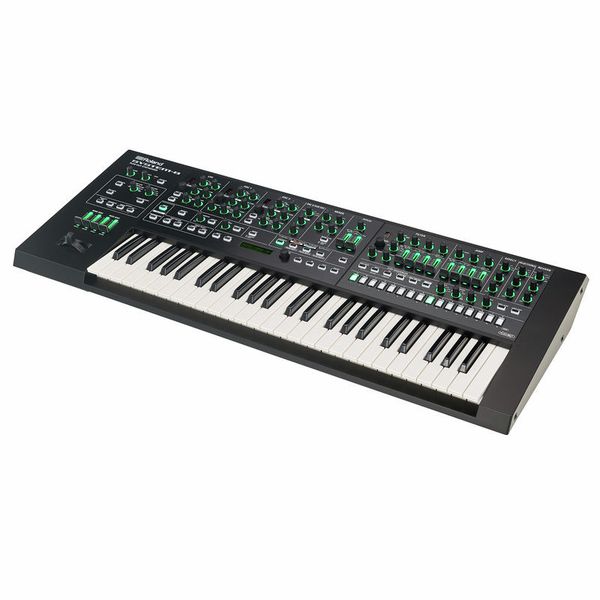


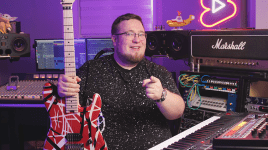
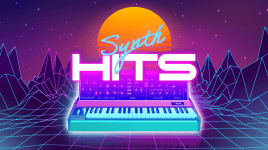


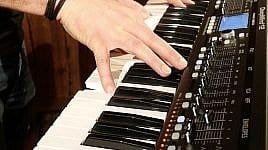
Alex says:
Elka Synthex is the best of the best synthesizer ever made❤️
Thomas says:
Where is Korg Trident ? Polysix ?
SadISoldItNow says:
D50 should probably have been included there just before the M1.
Nyebodnye says:
Kawaii K4 and K1, Korg DS8, Korg T2, Korg Kronos II 88, Roland TR808 and TB303